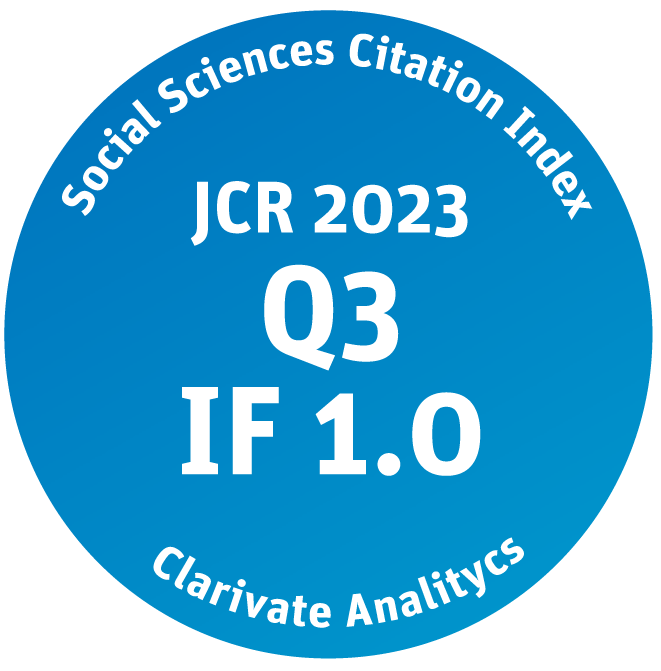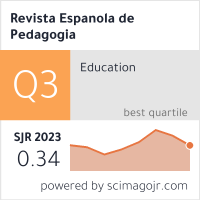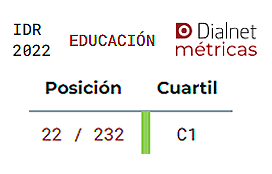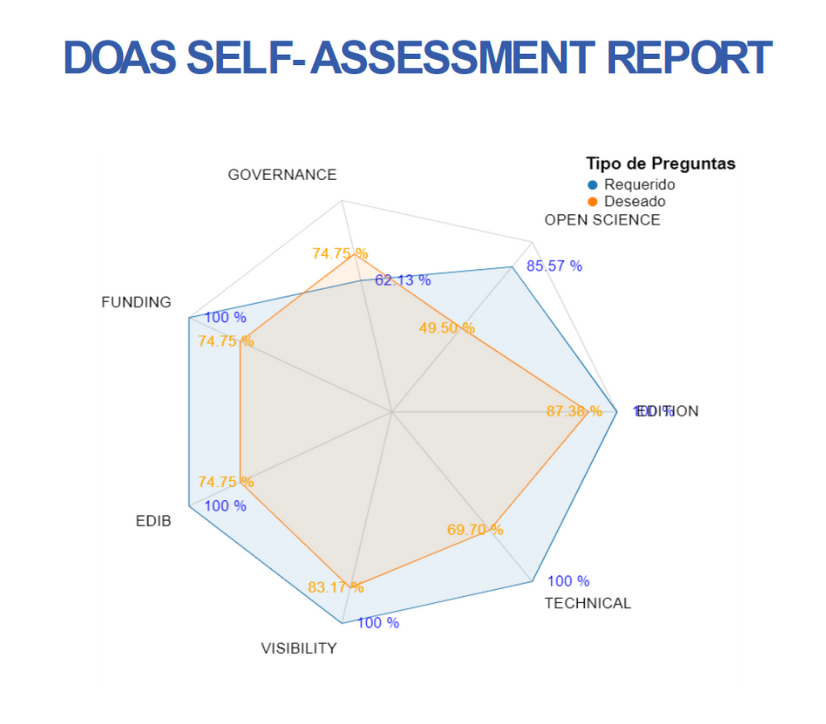Quantitative methods for capturing processes and contexts in educational research
Resumen
Los avances tecnológicos y metodológicos permiten formular nuevas preguntas de investigación fundamentales y aplicar nuevos diseños de estudios en la investigación educativa. Este artículo revisa los métodos emergentes empleados para el registro de los procesos de aprendizaje y enseñanza en el tiempo —las secuencias de eventos de aprendizaje— que tienen lugar en contextos múltiples. Para este fin, se emplean los conceptos de investigación nomotética e ideográfica utilizando el cubo de Cattell (1952), que identifica a las personas, las variables y el tiempo como las tres dimensiones clave para describir diseños de estudios. En la investigación educativa es importante tener en cuenta una cuarta dimensión —el contexto— dadas las estructuras anidadas (p. ej. díadas alumno- profesor, relaciones entre pares, grupos de alumnos, aulas, profesores y colegios) en las que se produce el aprendizaje y la enseñanza.
Existen varios métodos cuantitativos que permiten a los investigadores: a) determinar la calidad de la medición (p. ej. el análisis de factores, los modelos de respuesta a ítems), b) en secuencias de puntos temporales (p. ej. modelos autorregresivos), c) en estructuras multinivel complejas (p. ej. modelos multinivel, modelos de efectos aleatorios), empleando también estimadores sólidos en estudios de n pequeña (p. ej. modelos bayesianos). Se invita a los investigadores en educación a diseñar estudios apropiados para modelos multinivel con datos clasificados jerárquicamente o con clasificación cruzada, y a pensar en términos de procesos de aprendizaje intraindividuales.
Cómo citar este artículo: Malmberg, L. (2018). Métodos cuantitativos para el registro de procesos y contextos en la investigación educativa | Quantitative Methods for Capturing Processes and Contexts in Educational Research. Revista Española de Pedagogía, 76 (271), 449-462. doi: 10.22550/REP76-3-2018-03
Referencias | References
Allport, G. W. (1937). Personality. A psychological interpretation. Londres: Constable and company.
Bates, D., Mächler, M., Bolker, B. y Walker, S. (2014). Fitting Linear Mixed-Effects Models using lme4. Journal of Statistical Software, 67 (1). doi: 10.18637/jss.v067.i01
Cattell, R. B. (1952). Personality and motivation. Structure and measurement. Yonkers-on-Hudson, NY: World Book Company.
Deboeck, P. R. (2013). Dynamical Systems and Models of Continuous Time. En Todd D. Little (Ed.), The Oxford handbook of quantitative methods in psychology: Vol. 2: Statistical analysis. Oxford: Oxford University Press. doi: 10.1093/oxfordhb/9780199934898.013.0019
Duncan, T., Duncan, S. y Strycker, L. (2006). An Introduction to Latent Variable Growth Curve Modeling: Concepts, Issues, and Application. Mahwah, NJ: Lawrence Erlbaum.
Goldstein, H. (1997). Methods in School Effectiveness Research. School Effectiveness and School Improvement, 8 (4), 369-395. doi: 10.1080/0924345970080401
Hamaker, E. L. y Wichers, M. (2017). No Time Like the Present: Discovering the Hidden Dynamics in Intensive Longitudinal Data. Current Directions in Psychological Science, 26 (1), 10-15. doi: 10.1177/0963721416666518
Henderson, C. R. (1982). Best Linear Unbiased Estimation and Prediction under a Selection Model. Biometrics, 31 (2), 423-447.
Kaplan, D. y Depaoli, S. (2012). Bayesian Structural Equation Modeling. En R. H. Hoyle (Ed.), Handbook of structural equation modeling (pp. 650-673). Nueva York, NY: Guilford.
Kratochwill, T. R. y Levin, J. R. (2010). Enhancing the Scientific Credibility of Single-Case Intervention Research: Randomization to the Rescue. Psychological Methods, 15 (2), 124-144. doi: 10.1037/a0017736
Lamiell, J. T. (1998). ‘Nomothetic’ and ‘idiographic’: contrasting Windelband’s understanding with contemporary usage. Theory & Psychology, 8 (1), 23-38. doi: 10.1177/0959354398081002
Little, T. D. (2013). Longitudinal structural equation modeling. Nueva York, NY: Guilford.
Mainhard, T., Oudman, S., Hornstra, L., Bosker, R. J. y Goetz, T. (2018). Student emotions in class: The relative importance of teachers and their interpersonal relations with students. Learning and Instruction, 53, 109-119. doi: 10.1016/j.learninstruc.2017.07.011
Malmberg, L. E., Lim, W. H. T., Tolvanen, A. y Nurmi, J.-E. (2016). Within-students variability in learning experiences, and teachers’ perceptions of students’ task-focus. Frontline Learning Research, 4 (5), 62-82.
Marsh, H. W., Guo, J., Nagengast, B., Parker, P. D., Asparouhov, T., Muthén, B. y Dicke, T. (2017). What to do When Scalar Invariance Fails: The Extended Alignment Method for Multi-Group Factor Analysis Comparison of Latent Means Across Many Groups. Psychological Methods, Jan 12. doi: 10.1037/met0000113
Marsh, H. W. y Hau, K. T. (2007). Applications of latent-variable models in educational psychology: The need for methodological-substantive synergies. Contemporary Educational Psychology, 32 (1), 151-170. doi: 10.1016/j.cedpsych.2006.10.008
Matuschek, H., Kliegl, R., Vasishtha, S., Baayen, H. y Bates, D. (2017). Balancing Type I Error and Power in Linear Mixed Models. Journal of Memory and Language, 94, 305-315. doi: 10.1016/j.jml.2017.01.001
Mehta, P. (2013). N-level structural equation modeling. xxM user’s guide version 1. En Y. M. Petscher, Ch. Schatschneider y D. L. Compton (Eds.), Applied Quantitative Analysis in Education and the Social Sciences (p. 329). Londres: Routledge.
Moerbeek, M. y Teerenstra, S. (2016). Power analysis of trials with multilevel data. Boca Ratón: Chapmans CRC Press.
Morin, A. J., Marsh, H. W., Nagengast, B. y Scalas, L. F. (2014). Doubly latent multilevel analyses of classroom climate: An illustration. Journal of Experimental Education, 82 (2), 143-167. doi: 10.1080/00220973.2013.769412
Murayama, K., Goetz, T., Malmberg, L. E., Pekrun, R., Tanaka, A. y Martin, A. J. (2017). Within-person analysis in educational psychology: Importance and illustrations. British Journal of Educational Psychology, Series II, 12.
Muthén, B. (1994). Multilevel covariance structure analysis. Sociological Methods & Research, 22 (3), 376-398.
Muthén, B. y Asparouhov, T. (2012). Bayesian structural equation modeling: A more flexible representation of substantive theory. Psychological Methods, 17 (3), 313-335. doi: 10.1037/a0026802
Natesan, P. y Hedges, L. V. (2017). Bayesian unknown change-point models to investigate immediacy in single case designs. Psychological Methods, 4 (22), 743-759. doi: 10.1037/met0000134
Ortega, L., Malmberg, L. y Sammons, P. (2018). School effects on Chilean children’s achievement growth in language and mathematics: An accelerated growth curve model. School Effectiveness and School Improvement, 29 (2), 308-337. doi: 10.1080/09243453.2018.1443945
Ortega, L., Malmberg, L.-E. y Sammons, P. (2014). Teacher effects on Chilean children’s achievement growth: a cross-classified multiple membership accelerated growth curve model. Artículo presentado en la conferencia «Advances in Multilevel Modelling for Educational Research», en la Universidad de Maryland, EE.UU.
Perels, F., Gurtler, T. y Schmitz, B. (2005). Training of self-regulatory and problem-solving competence. Learning and Instruction, 15 (2), 123- 139. doi: 10.1016/j.learninstruc.2005.04.010
Praetorius, A. K., Koch, T., Scheunpflug, A., Zeinz, H. y Dresel, M. (2017). Identifying determinants of teachers’ judgment (in)accuracy regarding students’ school-related motivations using a Bayesian cross-classified multi-level model. Learning and Instruction, 52, 148-160. doi: 10.1016/j.learninstruc.2017.06.003
Rakoczy, K., Pinger, P., Hochweber, J., Klieme, E., Schütze, B. y Besser, M. (2018). Formative assessment in mathematics: Mediated by feedback’s perceived usefulness and students’ self-efficacy. Learning and Instruction, febrero de 2017. doi: 10.1016/j.learninstruc.2018.01.004
Ram, N. y Grimm, K. (2007). Using simple and complex growth models to articulate developmental change: Matching theory to method. International Journal of Behavioral Development, 31 (4), 303-316. doi: 10.1177/0165025407077751
Rasbash, J., Steele, F., Goldstein, H. y Browne, W. (2017). A User’s Guide to MLwiN Version 3.01. Bristol: Centre for Multilevel Modelling, Bristol. Robinson, W. S. (1950). Ecological correlations and the behavior of individuals. American Sociological Review, 15 (3), 351-357.
Scherer, R., Nilsen, T. y Jansen, M. (2016). Evaluating individual students’ perceptions of instructional quality: An investigation of their factor structure, measurement invariance, and relations to educational outcomes. Frontiers in Psychology, 7, 1-16. doi: 10.3389/fpsyg.2016.00110
Schmiedek, F. (2016). Experimental manipulation «in the wild»: Proposing a within-person encouragement design. Seminario presentado en el ciclo «Network on Intrapersonal Research in Education (NIRE)» en la Universidad de Oxford. Recuperado de http://www.education.ox.ac.uk/network-on-intrapersonalresearch-in-education-nire/seminar-5-oxfordmayjune-2016/florian-schmiedek/ (Consultado el 12/06/2018).
Schmitz, B. (2006). Advantages of studying processes in educational research. Learning and Instruction, 16 (5), 433-449. doi: 10.1016/j.learninstruc.2006.09.004
Schmitz, B. (2015). The study of learning processes using time-series analyses. Seminario presentado en el ciclo «Network on Intrapersonal Research in Education (NIRE)» en la Universidad de Oxford. Recuperado de http://www.education.ox.ac.uk/network-on-intrapersonalresearch-in-education-nire/seminar-1/bernhard-schmitz/ (Consultado el 12/06/2018).
Singer, J. D. y Willett, J. B. (2003). Applied Longitudinal Data Analysis: Modeling Change and Event Occurrence. Oxford: Oxford University Press. Skinner, E. A., Zimmer-Gembeck, M. J. y Connell, J. P. (1998). Individual differences and the development of perceived control. Monographs of the Society for Research in Child Development, 63 (2/3). doi: 10.2307/1166220
Van de Schoot, R., Kaplan, D., Denissen, J., Asendorpf, J. B., Neyer, F. J. y van Aken, M. A. G. (2014). A gentle introduction to Bayesian analysis: application to developmental research. Child Development, 85 (3), 842-860. doi: 10.1111/cdev.12169
Voelkle, M. C., Oud, J. H. L., von Oertzen, T. y Lindenberger, U. (2012, jul.). Maximum Likelihood Dynamic Factor Modeling for Arbitrary N and T Using SEM. Structural Equation Modeling, 19 (3), 329-350. doi: 10.1080/10705511.2012.687656
Von Davier, M., González, E. y Mislevy, R. J. (2009). What are plausible values and why are they useful? En M. von Davier y D. Hastedt (Eds.), IERI monograph series: Issues and methodologies in large scale assessments: Volume 2 (pp. 9-36). Hamburgo, Alemania: IERI Institute.
Walls, T. A., Barta, W. D., Stawski, R. S., Collyer, C. S. y Hofer, S. M. (2013). Time-scale dependent longitudinal designs. En B. Laursen, T. D. Little y N. A. Card (Eds.), Handbook of developmental research methods (pp. 45-64). Nueva York: Guilford Press.
Walls, T. A. y Schafer, J. S. (2006). Models for intensive longitudinal data. Nueva York: Oxford University Press.
Zitzmann, S., Lüdtke, O., Robitzsch, A. y Marsh, H. W. (2016). A Bayesian Approach for Estimating Multilevel Latent Contextual Models. Structural Equation Modeling, 23 (5), 661- 679. doi: 10.1080/10705511.2016.1207179
Citación recomendada | Recommended citation
Malmberg, L.
(2018)
.
Métodos cuantitativos para el registro de procesos y contextos en la investigación educativa.
Revista Española de Pedagogía, 76(271).
https://www.revistadepedagogia.org/rep/vol76/iss271/7
Licencia Creative Commons | Creative Commons License
Esta obra está bajo una licencia internacional Creative Commons Atribución-NoComercial 4.0.
This work is licensed under a Creative Commons Attribution-NonCommercial 4.0 International License
Palabras clave | Keywords
datoslongitudinalesintensivos, Investigacióneducativa, métodoscuantitativos, modelomultinivel, modelosestadísticos


 https://orcid.org/0000-0002-5309-7403
https://orcid.org/0000-0002-5309-7403





